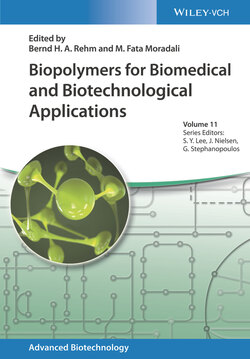Читать книгу Biopolymers for Biomedical and Biotechnological Applications - Группа авторов - Страница 30
2.3.6 Gellan Gum
ОглавлениеIndustrially, gellan gum is produced by the bacterium Sphingomonas paucimobilis ATCC 31461 [116]. It is a heteropolysaccharide composed of L‐rhamnose, D‐glucose, D‐glucuronic acid, and D‐glucose monomers and side chains of acetyl and glyceryl substituents. Gellan gum have the ability to form gels, whose properties are dependent on the acyl group content: low acyl form produces rigid, nonelastic, brittle, and thermostable gels, while the high acyl gellan produces soft, elastic, non‐brittle, thermoreversible gels [117,118]. Gellan gum is mainly used in the food industry, namely, as a thickener, stabilizer, and binder agent. It is used in desserts and drinking jellies, as well as in low‐calorie (sugar‐free) jams, fruit preparations, yogurt, sauces, nonfat salad dressings, and films [119,120]. Gellan gum is commercialized as Kelcogel, a gelling agent in the food industry, and is marketed by CP Kelco.
Moreover, gellan is described as a multifunctional additive for various pharmaceutical products, especially for controlled release forms, including oral, ophthalmic, nasal, and other formulations [121,122]. It is already used in ophthalmic formulations (e.g. Timoptol). Recent reports suggest that gellan‐based materials can also be used in tissue engineering, regenerative engineering, or gene transfer technology [118,123,124].
